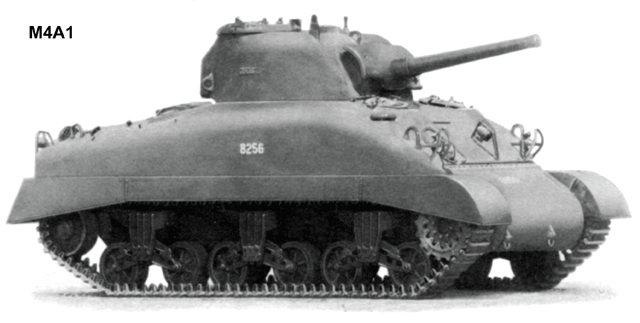What’s Innovation Worth?
Blog: Form Follows Function

What does an old World War II tank have to do with innovation?
I’ve mentioned it before, but it bears repeating – one of benefits of having a blog is the ability to interact with and learn from people all over the world. For example, Greger Wikstrand and I have been trading blog posts on innovation for six months now. His latest post, “Switcher’s curse and legacy decisions”,is the 18th installment in the series. In this post, Greger discusses switcher’s curse, “a trap in which a decision maker systematically switches too often”.
Just as the sunk cost fallacy can keep you holding on to a legacy system long past its expiration date, switcher’s curse can cause you to waste money on too-frequent changes. As Greger points out in his post, the net benefit of the new system must outweigh both the net benefit of the old, plus the cost of switching (with a significant safety margin to account for estimation errors in assessing the costs and benefits). Newer isn’t automatically better.
“Disruption” is a two-edged sword when it comes to innovation. As Greger notes regarding legacy systems:
Existing software is much more than a series of decisions to keep it. It embodies a huge number of decisions on how the business of the company should work. The software is full of decisions about business objects and what should be done with them. These decisions, embodied in the software, forms the operating system of the company. The decision to switch is bigger than replacing some immaterial asset with another. It is a decision about replacing a proven way of working with a new way of working.
Disruption involves risk. Change involves cost; disruptive change involves higher costs. In “Innovate or Execute?”, Earl Beede asked:
So, do our employers really want us taking the processes they have paid dearly to implement and products they have scheduled out for the next 15 quarters and, individually, do something disruptive? Every team member taking a risk to see what they can learn and then build on?
Wouldn’t that be chaos?
Beede’s answer to the dilemma:
Now, please don’t think I am completely cynical. I do think that the board of directors and maybe even the C-level officers want to have innovative companies. I really believe that there needs to be parts of a company whose primary mission is to make the rest of the company obsolete. But those disruptive parts need to be small, isolated groups, kept out of the day-to-day delivery of the existing products or services.
What employers should be asking for is for most of the company to be focused on executing the existing plans and for some of the company to be trying to put the executing majority into a whole new space.
This meshes well with Greger’s recommendations:
Conservatism is often the best approach. But it needs to be a prudent conservatism. Making changes smaller and more easily reversible decreases the need for caution. We should consider a prudent application of fail fast mentality in our decision-making process. (But I prefer to call it learn fast.)
Informed decision-making (i.e. making decisions that make sense in light of your context) is critical. The alternative is to rely on blind luck. Being informed requires learning, and as Greger noted, fast turn-around on that learning is to be preferred. Likewise, limiting risk during learning is to be preferred as well. Casimir Artmann, in his post “Fail is not an option”, discussed this concept in relation to hiking in the wilderness. Assessing and controlling risk in that environment can be a matter of life in death. In a business context, it’s the same (even if the “death” is figurative, it’s not much comfort considering the lives impacted). Learning is only useful if you survive to put it to use.
Lastly, it must be understood that decision-making is not a one-time activity. Context is not static, neither should your decision-making process be. An iterative cycle of sense-making and decision-making is required to maintain the balance between innovation churn and stagnation.
So, why the tank?
The M-4 Sherman, in addition to being the workhorse of the U.S. Army’s armor forces in World War II, is also an excellent illustration of avoiding the switcher’s curse. When it was introduced, it was a match for existing German armored vehicles. Shortly afterwards, however, it was outclassed as newer, heavier, better armed German models came online. The U.S. stuck with their existing design, and were able to produce almost three times the number of tanks as Germany (not counting German tanks inferior to the Sherman). As the saying goes, “quantity has a quality all its own”, particularly when paired with other weapon systems in a way that did not disrupt production. The German strategy of producing multiple models hampered their ability to produce in quantity, negating their qualitative advantage. In this instance, progressive enhancement and innovating on the edges was a winning strategy for the U.S.
Leave a Comment
You must be logged in to post a comment.







